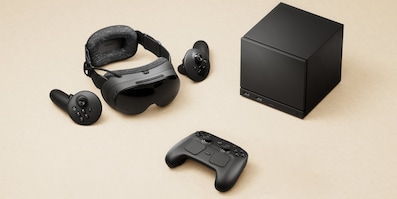Couch co-op instead of Netflix: the ultimate winter co-op games
Guide
by Rainer Etzweiler

Guide
by Rainer Etzweiler

Best selling

Background information
by Philipp Rüegg

News + Trends
by Philipp Rüegg

News + Trends
by Simon Balissat

What is AR?
AR refers to augmented reality, a computer-based way of expanding our perception of reality.
In other words, a digital way of supplementing what’s truly in front of you with additional information in the form of animations, graphics, texts, videos, etc.
To jump into this augmented reality experience, you’ll need a smartphone, tablet, holography system and a heads-up display or AR glasses such as you might know from Microsoft Hololense or Google Glass.
We’re still in the process of building up our stock in this area.
AR can be applied to gaming. A popular example in this genre is Pokémon Go, which introduces virtual objects, such as Pokémon, to many different locations around the world.
But augmented reality also finds its use in the tourism sector. On a city trip, virtual objects and information can be fed to you through the use of AR glasses.
What is VR?
VR stands for virtual reality, i.e. the representation and simultaneous perception of reality in a computer-generated interactive virtual environment.
In other words, you’re fully immersed in a virtual world.
As a user, you can only experience these digital 3D worlds by using VR glasses from companies such as Dell, HP, HTC, Lenovo, Medion, Microsoft, Oculus, Pimax, Samsung or Sony.
Your respective virtual experience will be strongly dependent on your computer’s performance. The stronger, the better.
Virtual reality can be applied in various fields: 3D gaming, industrial applications, training, real estate marketing and much more.
The VR gaming space offers a variety of innovative and fun possibilities. 3D worlds are becoming more and more realistic. Soon, you won’t just hear and see, but also feel your virtual world.
Throughout this wave of digitalisation, VR has also gained more importance in the industrial sector. Social distancing in particular has now given VR a completely new status.
Events and functions, product configurations for new facilities or cars, introducing new products at trade shows, all this and much more has become possible.
So what exactly is the difference between AR and VR?
Simply explained: augmented reality (AR) requires a user to be present on-site to interact. In virtual reality (VR), a user’s surroundings are entirely simulated.